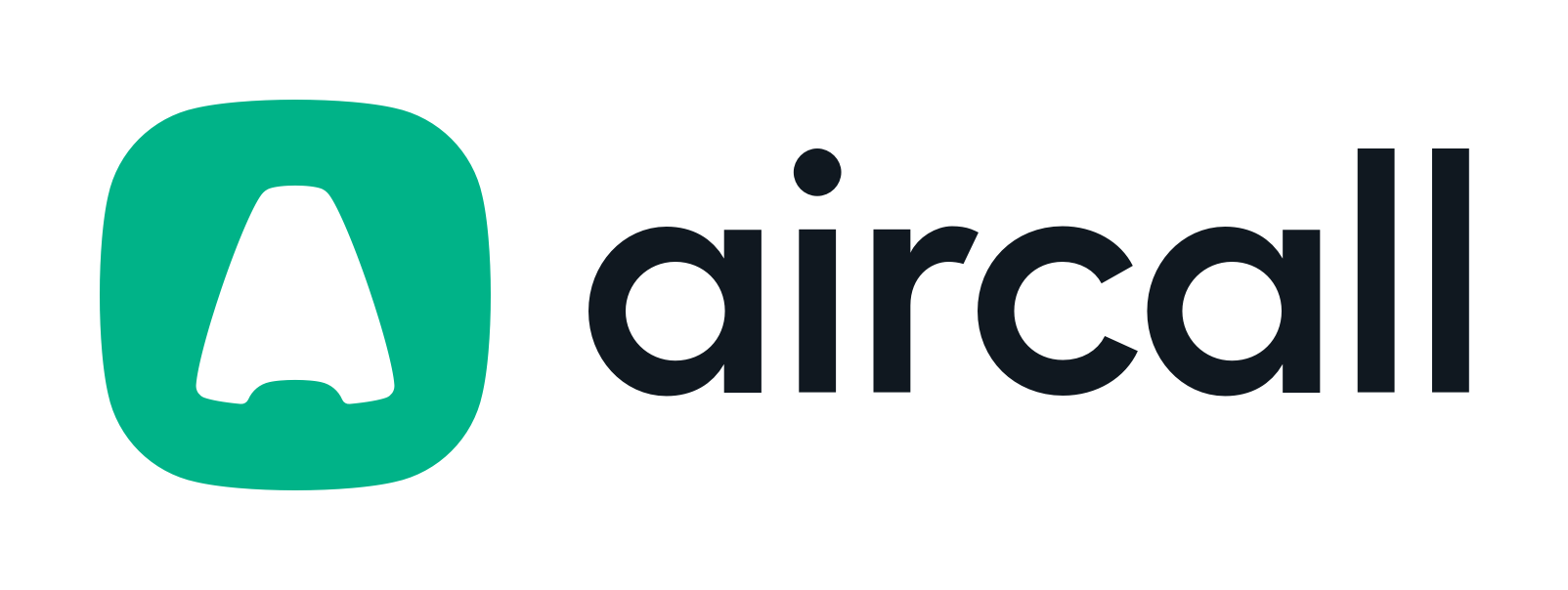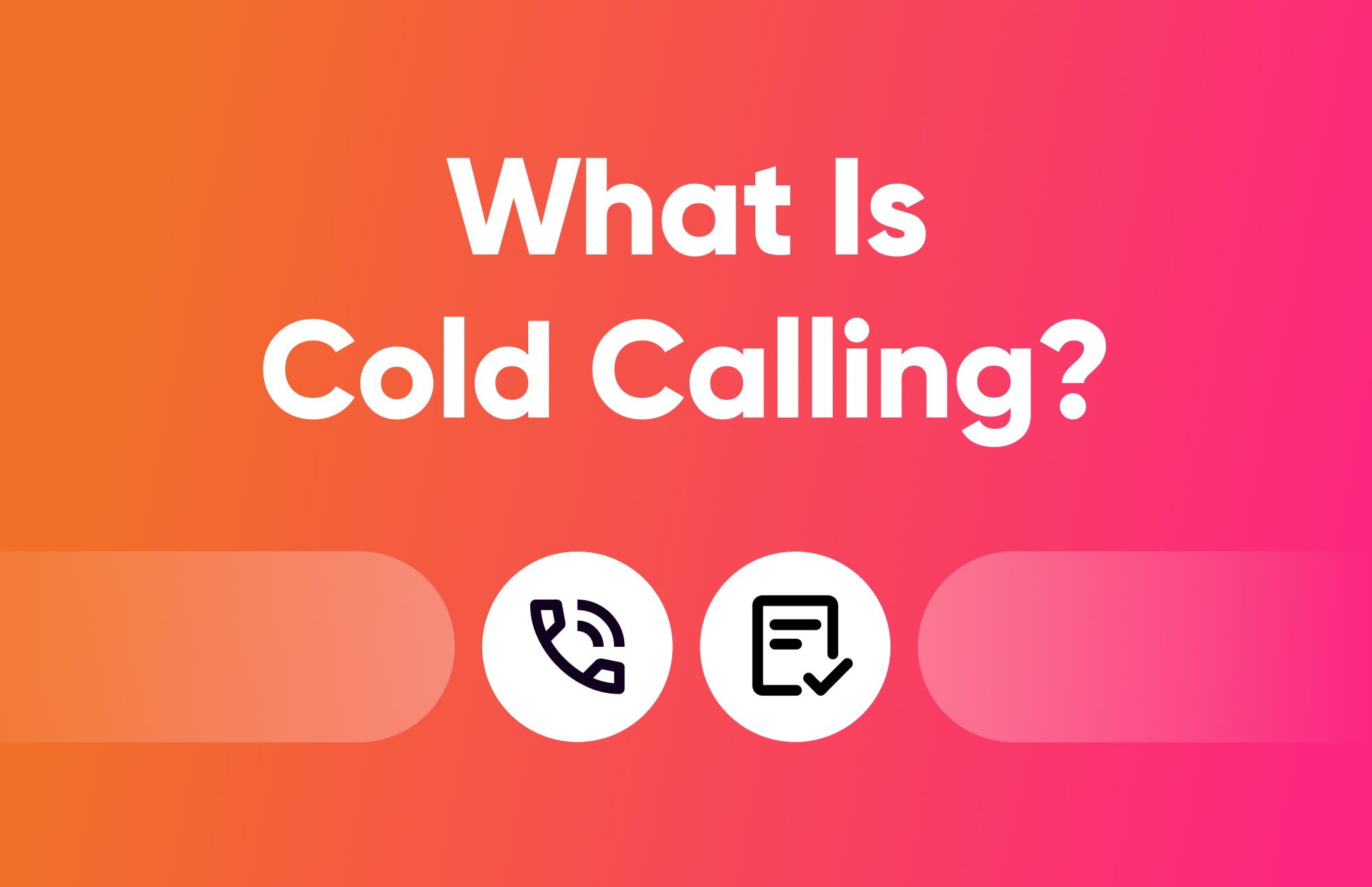![15 Best Sales Cadence Software For 2025 [Compared]-festured-image](https://6052405.fs1.hubspotusercontent-na1.net/hubfs/6052405/2023%20-%20Blog/EN%20SEO%20blogs%20%28Clusters%29%20%5B%2B%20FR%2c%20ES%20and%20DE%20variations%5D/Outbound%20sales%20%28cluster%29/Sales%20cadence%20software/EN_sales-cadence-software-card.png)
What's on this page:
Dialing number after number only to meet quick dismissals or, worse, the immediate click of a hang-up is a reality for many sales development reps (SDRs).
The heart of the issue? Breaking through the initial barrier of disinterest or annoyance within the first few seconds of a cold call.
This article explains how to open a cold call in ways that grab your prospect’s attention and zero in on critical pain points.
We’ve compiled a list of specific, SDR-tested openers and strategies designed to capture and hold attention:
- Get the prospect excited.
- Give the option to hang up.
- Mention work you’ve seen by the prospect.
- Ask if they’ve seen your email.
- Add humor where you can.
- Ask for permission to speak for 30 seconds.
- Say you’ve not spoken before.
- Ask the prospect how they are.
- Be upfront about the fact that it is a cold call.
- Congratulate the prospect on a recent win.
- Start with something strange.
1. Get the prospect excited
Our first cold call opener example is from Will Falkenborg, SDR Lead at Champify. Will has great results on the phone. Last year, he hit 220% of his quota! That’s not bad going for a newbie Sales Development Representative. This success showcases his ability to connect with prospects right from the start.
You need to keep those energy levels up when you’re cold-calling. If you sound bored, the prospect will be bored, get it? Will’s cold call opener example plays into this.
The cold call opener: “Hey, this is Will from Champify. How’ve you been?” [chuckle while saying, “How’ve you been?”].
Why it works: You’re excited, the prospect is excited. The prospect’s response to your opener determines what you do next. You could go into a hook or do a permission-based opener to get more valuable time.
This opener is pretty safe. You’ll likely gauge how the prospect feels from the response. If they aren’t giving you the same positive tone back, take a deep breath and don’t be put off. They might need some more time to warm up, so get to the point of the call quickly.
2. Give the option to hang up
Now, let’s talk about Elric Legloire, the Global SDR Manager at Agorapulse. He’s got a bold move up his sleeve that’s turning heads.
Eric’s approach gives power back to the person on the other end of the line.
The cold call opener: “Hi Sally, it’s Elric from Agorapulse; this is a cold call. You want to hang up now or give me 30 seconds to explain why I’ve called?”
Why it works: It’s disarmingly honest. This opener flips the script by acknowledging the nature of the call and putting the decision in the prospect’s hands. It’s a refreshing change from the usual unsolicited outbound sales pitches; more often than not, curiosity wins over.
Elric’s method is a masterclass in respecting the prospect’s time and autonomy. When you give someone the choice to engage or not, you’re more likely to pique their interest.
And when they choose to listen, they’re all ears, which is exactly what you want.
Use this tactic and see how it works for you. It’s a bold move, but as Elric has shown, the payoff can be huge. If the prospect decides to continue the call, it’s likely you’ll be able to bag more time even after your 30 seconds are up.

(Infographic showing Elric’s cold call opener)
3. Mention work you’ve seen by the prospect
Nick Cegelski, the founder of “30 Minutes to President’s Club,” knows how to turn cold phone calls into warm conversations. Nick uses recent events or news related to the prospect. This helps him consistently outperform expectations in conversion rates.
The cold call opener: “Emma, I just finished reading your press release about the new product launch. My name is Nick, and I know you didn’t expect me to call you this afternoon. Mind if I steal a minute to tell you why that press release prompted me to call you, and then you can tell me whether or not it’s worth a chat?”
Why it works: A strong opener like this one immediately establishes relevance. By mentioning the press release, Nick shows that his call isn’t random. It’s based on genuine interest and recent developments.
It’s a personalized approach that makes the prospect feel valued and understood. This method also invites the prospect to talk. It’s not a one-sided pitch.
This opener is effective when reaching out to prospects who’ve recently been in the news or achieved something noteworthy. It signals that you’re informed and engaged with what’s happening in their world.
Yet, it requires preparation and timing. The news needs to be fresh and directly relevant to the angle of your call.
💡 Tip: ChatGPT 4 can be useful for gathering research in half the time - Here’s how Troy Munson, Sr Account Executive, uses it, explained on Teach Me Outbound (TMO).
4. Ask if they’ve seen your email
Will Falkenborg is back at it (again) with another compelling strategy from his SDR Lead role at Champify. This time, he uses a blend of email and phone outreach to break the ice.
Will’s dual-channel approach helps a potential customer feel more at ease. The prospect might not have spoken to you on the phone, but there’s a level of familiarity if they’ve seen your email.
The cold call opener: “Hey, This is Will from Champify; you may have seen my email earlier; you got a minute? I’ll be brief.”
Why it works: There is a (albeit small) pre-existing connection. The prospect may have seen your name in their inbox, but now they can hear your tone of voice, which helps put some people at ease. Remember when you call that you’re putting the other person on the spot. Plus, this opener also promises to be brief; respecting the prospect’s time is always a good move.
This approach works best if you’ve sent an email that adds value. Think of relevant topic insights, offers, or updates that matter to the prospect. If they haven’t seen your email, you have a perfect in to highlight the key points.
If they have, then the call can deepen the conversation. It can address any questions or interest sparked by your message.
👉 Pro tip: Find the prospect’s phone number and email address in one click by using Kaspr’s Chrome Extension.
5. Add humor where you can
People buy from people they like. You’re paving the way for a more relaxed and open conversation by making someone smile even a little.
Will Falkenborg, SDR Lead at Champify, uses humor where he can. Aside from sending video messages in a hot dog costume, he also likes to use humor to add to his positive tone.
The cold call opener: “Hey, this is Will from Champify. Can you hear me, okay? Might be on a little bit of a bad line, or there might be a gorilla in the room.”
Why it works: It catches people off guard in a pleasant way. Instead of starting with a lengthy sales pitch, this opener adds a moment of levity. It makes the prospect more open to what comes next.
Now, this is an extreme example of adding humor to your opener. But it works for Will because he’s comfortable saying it. Try to find something similar that works for you!
Incorporating humor, especially right at the start, can be a tightrope walk. It’s crucial to read the room - or, in this case, the tone of the call.
This strategy is perfect for situations where a little lightness might be welcomed. Probably one to be tested across different personas to see what responses you get. Use the feedback to adapt your approach.
6. Ask for permission to speak for 30 seconds
Sometimes, asking nicely is all it takes to get your foot in the door. Benjy Aryeh is the Senior Business Development Representative Team Lead at Similarweb. He shared an opener that helped him and other sales reps to achieve a big increase in his success rate.
The cold call opener: “Do you have 30 seconds to share why I’m calling, and you can tell me if it makes sense to continue?”
Why it works: It’s all about the respect you show for the prospect’s time. Even if it is a ‘bad time’, sales reps using this opener show the prospect immediately that they are confident in the value of what they have to say.
After all, if you can make your point well in just 30 seconds, it’s likely worth hearing.
A permission-based opener like this one can be great for setting up the rest of sales discovery. You can use those 30 seconds to pique interest like Benjamin Dennehey, the UK’s Most Hated Sales Trainer, does in the video below. 🎬
Notice how, in the video, Ben uses open-ended questions to draw out the information from the prospect. Many sales professionals make the big mistake of not asking the right questions on phone calls. You don’t want the prospect just to give you a “yes” or “no”; you need them to elaborate on the details.
7. Say you’ve not spoken before
Honesty can be refreshing to prospects who drown in a sea of sales calls. Shabri Lakhani has helped many organizations improve their sales processes with a career that spans over 11 years. Shabri was once a sales rep too though; the phone was her favorite channel. She shares a cold calling script that has greatly increased how many prospects engage in the conversation.
The cold call opener: “Hi, this is Shabri calling from Kaspr. We haven’t spoken before…”
Why it works: By explicitly stating that this is a new connection, Shabri removes potential confusion and builds trust.
Remember that many people you need to target in outbound sales won’t have heard of you. And that’s a good thing! According to Chet Holmes’ buyers’ pyramid, the winning zone is that 30% who aren’t in the market to buy right now. 👇
 (Chet Holmes’ buyers’ pyramid)
(Chet Holmes’ buyers’ pyramid)
This line does more than introduce Shabri. It immediately establishes an open, honest dialogue. It shows the prospect that Shabri values authenticity and reaches out for a genuine conversation.
Try this strong opener for when you’re reaching out for the first time.
8. Ask the prospect how they are
Nathan Frieberg, the Outbound Sales Manager at Productside, says nothing is more effective than opening as we naturally talk to someone. It sounds simple, but don’t let that fool you.
This approach helped Nathan increase the number of prospects willing to engage in conversation notably.
The cold call opener: “Hey [name], Nate from Productside - how are you doing today?”
Why it works: When you show real interest in someone’s day, you’re laying the groundwork for a more relaxed chat. It’s like saying, “Hey, I’m here to talk, but let’s make sure you’re okay first.”
Nathan leads with empathy. He breaks down barriers put up in defense against sales calls.
This opener is killer when you want to show you’re about more than business. Remember, while it’s crucial to come off as genuinely interested, you’ve also got to transition smoothly to why you called.
It’s about striking that perfect balance between being personable and professional.
9. Be upfront that it is a cold call
Being upfront about the nature of the call can work in your favor. It sets the stage for a more honest and open conversation where the prospective customer knows what to expect. That’s the strategy of Brad Norgate, a Commercial Account Executive at Cognism.
By laying his cards on the table right from the start and ensuring he uses accurate phone numbers for cold calling, Brad has seen a significant improvement in keeping prospects on the line longer than the initial 30 seconds.
The cold call opener: “Hi [name], you’re going to hate me; this is actually a cold call. Don’t know if you want to hang up now or give me 30 seconds and then decide?”
Why it works: It’s not every day someone calls you up and starts a conversation like that. It’s a breath of fresh air and signals that Brad values transparency and their time. This not only disarms the prospect but also piques their curiosity.
This tactic is golden for breaking the ice in a genuine and human way. It’s especially effective if you need to stand out against sales calls that all start to sound the same after a while.
Be ready to follow up with something compelling in those 30 seconds you’ve asked for. You’ve got their attention. Now you need to keep it.
10. Congratulate the prospect on a recent win
Art Sobczak, the President of Business By Phone Inc., knows how to make a cold call feel anything but cold.
Art recommends opening calls by showing your connection to the prospective customer. The more tailored, personalized, and on-target, the better.
The cold call opener: “Hi [name]. Congratulations on the [achievement] I had read about in [media].”
Why it works: It implies you are not a typical sales call. And, because openers like this one lead with the prospect, it’s a value-led approach.
This opener shines brightest when you genuinely appreciate and can speak to the prospect’s win. It’s perfect for showing you’re paying attention to what’s happening in their world. Just be sure you’re sincere about it because authenticity matters.
Use LinkedIn to find facts for your congratulations. You can also get the phone numbers of prospects directly from LinkedIn, To do so, you just need to install the Kaspr Chrome Extension - it is free.
11. Start with something strange
Tom Boston, Brand Awareness Manager at Salesloft, takes the cake - or should we say, biscuit - when it comes to unique cold call openers. Believe it or not, his quirky approach has greatly increased his success in capturing attention right from the get-go.
The cold call opener: “You’ll have to bear with me; I’ve just had a biscuit.”
Why it works: It doesn’t make any logical sense, and that’s precisely why it works. Tom’s strategy shifts the prospect’s mind from “Oh, another cold call” to “Wait, what did he just say?”
This confusion is a great opportunity. It means you’ve snagged their attention; in the sales world, attention-grabbing is everything.
This strategy can be particularly effective when you’re one of many callers vying for attention. When you know the prospect receives many outbound sales calls, a strange opener makes you memorable.
“Remember, in sales:
Weird is good. Strange is memorable. Different is successful.”
Confidence matters more than what you say
Here’s a little secret that’s not so secret: on a cold call, your confidence can shine brighter than the words you choose. It’s not just about the perfect opener or the slickest pitch. How you say something often weighs more than the exact words.
Here are some cold calling tips to fill you with confidence:
- Play to your strengths. Take a good, hard look at what makes your conversational style unique, and then run with it. Not everyone can pull off a quirky opener about a biscuit, and guess what? That’s okay. The goal is to find a rhythm that feels natural and resonates with your persona.
- Test different approaches. Be scientific and run an A/B test with your cold calling openers. Review which ones give you the best success rate and continue testing. Your opener should make you feel comfortable and confident.
- Stand up and smile while you dial. It might sound too simple to be true, but many reps swear by this technique. Why? Standing up straight sends a jolt of energy through your body. Even though they can’t see you, smiling adds warmth and friendliness to your voice.
Confidence is contagious. If you believe in what you’re saying, your prospect will, too. It was even scientifically tested. Research in “Social Psychological and Personality Science” shows that people who express confidence are likelier to be seen as competent. This is true even without real evidence of their ability.

(Infographic explaining how to be confident cold calling)
How to structure a cold call
Chris Russell, Senior SDR at Allego, has a neat way of breaking down the anatomy of a cold call that really puts things into perspective.
Picture your cold call in three main acts: the three-second opener, the thirty-second pitch, and the three-minute conversation.
Each act has its own goal, but they all share the same goal: moving the call forward to the next stage.
The three-second opener
This is your foot in the door. Those first few seconds are to grab attention and earn the right to continue the conversation. It’s not about selling. It’s about sparking enough interest so the prospect is willing to listen a bit longer.
Whether you’re using humor, a direct question, or a surprising fact, your opener’s job is to pave the way for what’s coming next.
The thirty-second pitch
Got through the opener? Great job! Now, you’ve got roughly 30 seconds to make your case.
This is where you quickly convey who you are, what you offer, and why it matters to them. Be clear and concise. Be compelling. Make the prospect want to keep talking.
💡 Remember, the goal here isn’t to close the deal but to move the call to the next stage.
The three-minute conversation
This is where the real sales conversations happen. You can dive deeper into the prospect’s needs, how your solution fits, and what the next steps could look like.
It’s a two-way dialogue, but you need to listen more than you talk. Recent data from Gong shows that successful sales reps listen for 54% and talk for 46% of their sales calls.
Cold call opener FAQs
With so many do’s and don’ts in cold calling, it’s easy to get overwhelmed. So, let’s tackle some of the most burning questions about cold call openers to set you on the right path.
What cold calling openers should you avoid?
The first no-go? Anything that sounds robotic or rehearsed. You know, those lines that have been recited more times than anyone can count. Avoid openers that start with, “Are you looking for ways to improve your [generic service]?”
Why? Because they scream sales call and give your prospect an instant reason to hang up. ⛔
Also, steer clear of anything too vague or indirect. Beating around the bush doesn’t do you any favors. You have a short window to capture interest, so make it count by being clear and engaging.
How do I get past the gatekeeper?
Your approach should blend empathy, clarity and a smidge of charm.
Always treat the gatekeeper with the respect you’d show the decision-maker. Use their name, be polite, and be honest about your reason for calling.
A little humor helps. So does a direct request like, “Can you help me contact [decision-maker’s name] for a chat about [reason]?”
💡 Use accurate contact data to avoid the gatekeeper altogether.
What is a good opening line for a sales call?
It should be personal, relevant, and engaging. For example, “Hi [name], I noticed you’re looking to scale your team, and I’ve got some insights that might help. Got a minute to chat?”
This opener works because it’s tailored to the prospect. It suggests value and ends with a question. This way, you invite the prospect into a conversation.
Remember, the goal of your opener isn’t to close the sale. It’s to open a dialogue.
How you open a cold call can make the prospect feel like they’re about to gain something from the talk (or the opposite). They should not feel like they’ll waste their time. Keep it light, keep it personal, and above all, keep it interesting.
More cold calling tips
For more tips on how to open a cold call. Check out prospecting on demand, our streaming platform! There are lots of videos on cold calling, sales emails and social selling.
Accurate European contact data
Get accurate data for your prospects and connect with your favorite sales tool









![The SMB Guide to Cold Calling [+3 Data-Backed Strategies]-festured-image](https://6052405.fs1.hubspotusercontent-na1.net/hubfs/6052405/2-Pie%20Chart.png)